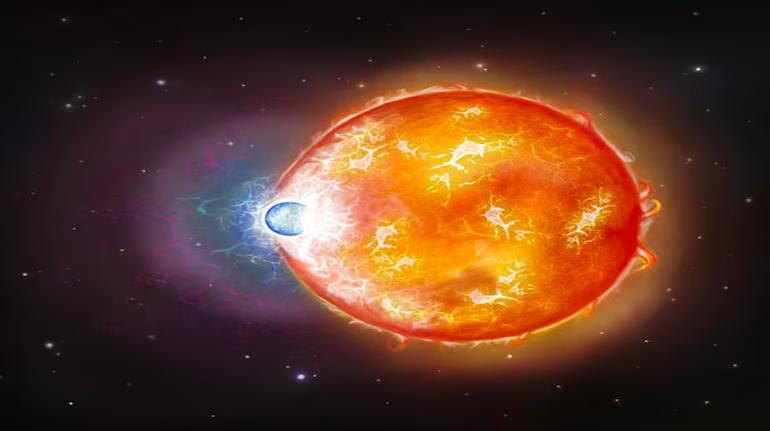
Hubble Spots Rare “Zombie Star” Born from Cosmic Collision
The universe is full of mysteries and wonders, and the latest discovery by astronomers is no exception. Using the Hubble Space Telescope, scientists have spotted a rare “zombie star” that was born from a cosmic collision. This extraordinary star, known as WD 0525+526, is a white dwarf that defies the typical characteristics of its kind.
White dwarfs are stars that have exhausted their nuclear fuel and have collapsed in on themselves. They are often roughly the size of Earth but are much less massive, typically weighing half as much as the Sun. However, WD 0525+526 is an exception to this rule. Located 130 light-years away, it weighs 20% more than the Sun, placing it in the “ultra-massive” category.
So, what makes this star so unusual? According to scientists, WD 0525+526 was formed when two stars violently merged in a cosmic collision. This catastrophic event resulted in the creation of a new star, one that is unlike any other white dwarf known to date.
The discovery of this “zombie star” is a significant one, as it provides valuable insights into the formation and evolution of stars. By studying WD 0525+526, scientists can gain a better understanding of the complex processes that occur during the merger of stars.
The Hubble Space Telescope played a crucial role in the discovery of this rare star. Using its advanced instruments, astronomers were able to observe WD 0525+526 and gather valuable data about its size, mass, and composition. The telescope’s incredible resolution allowed scientists to pinpoint the star’s exact location and study its properties in detail.
So, how does this “zombie star” differ from other white dwarfs? For starters, its size is significantly larger than that of typical white dwarfs. In fact, it is one of the largest white dwarfs known to date, with a diameter of approximately 1.1 times that of the Sun. Its mass is also unusually high, weighing 20% more than the Sun.
Another key difference is the star’s composition. White dwarfs are typically made up of carbon and oxygen, which are the remnants of the star’s nuclear fuel. However, WD 0525+526 appears to have a different composition, with a higher concentration of helium and heavier elements.
The discovery of this “zombie star” has many implications for our understanding of the universe. By studying WD 0525+526, scientists can gain insights into the complex processes that occur during the merger of stars. This, in turn, can help us better understand the formation and evolution of stars and galaxies.
In conclusion, the discovery of WD 0525+526, a rare “zombie star” born from a cosmic collision, is a significant one. This extraordinary star provides valuable insights into the formation and evolution of stars and has many implications for our understanding of the universe. The Hubble Space Telescope played a crucial role in the discovery of this star, and its advanced instruments continue to provide scientists with valuable data about the universe.






